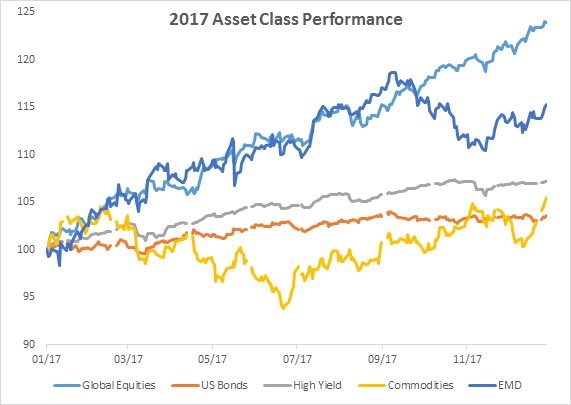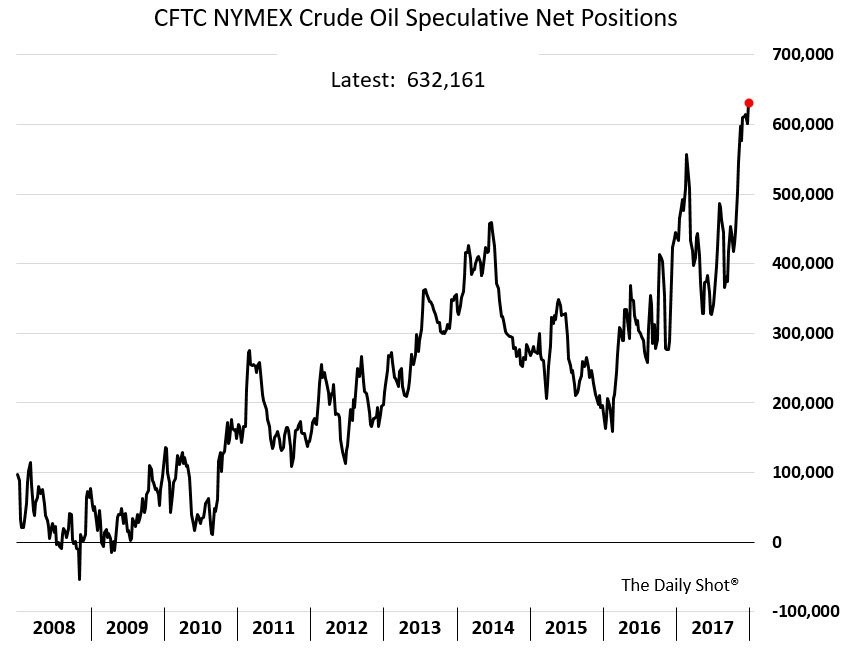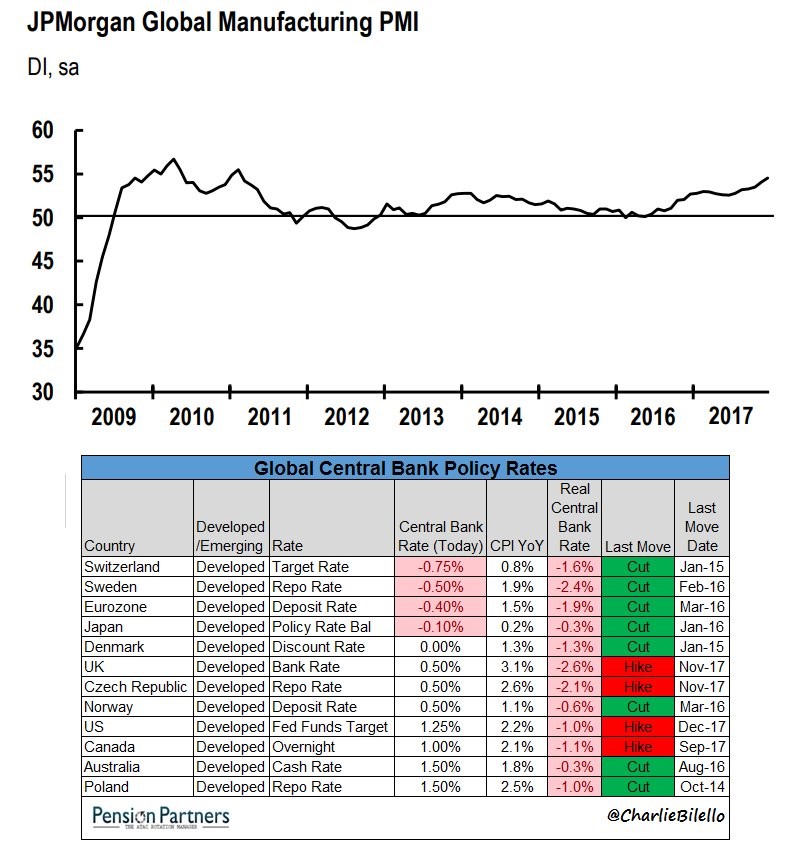2018 Won’t Be A Repeat Of 2017
Global Equities & EM Debt Should Have A Solid 2018
The chart below shows the major asset classes’ performance in 2017. Global equities were up 23.9%. I expect a smaller increase this year because equities in many markets were left for dead in 2016. Optimism is now high, meaning it’s tougher to meet expectations. Even if growth accelerates, there’s less room for outperformance.
Emerging market debt had a correction in September and October, but still ended the year up 15.3%. The Indian economy is expected to have a sharp rebound in 2018. The expectations for China aren’t high. As a whole, the improvement in emerging markets is expected to continue. I see the same situation for them as stocks. Heightened expectations limiting upside, but decent performance because of economic improvement.

High Yield Debt Is Risky Because Of QE Tightening
High yield debt was up 7.2%. I think this sector has the highest likelihood of a reversal. With the ECB ending its bond buying program and the Fed unwinding its balance sheet at a quicker pace, I could see high yield debt performing badly. The one saving grace could be that the energy firms dominate the high yield debt market. Since I expect energy and commodities to do well, this can help some of the high yield debt indexes that have a high energy and mining weight. The chart below is a long term historical reference point for speculation in crude. It’s important to show that there has been a long term uptrend, which means you shouldn’t get too pessimistic about the long speculation. I’m expecting a short pullback in January, but nothing close to the decline in 2014 to 2015. The fact that energy stocks haven’t followed crude, might be evidence a decline to the low $50s in WTI is likely.
(Click on image to enlarge)

Commodities Should Be Helped By Economic Growth
As I just mentioned, commodities should do better than their 5.5% increase in 2017. They already showed signs of life in December after having poor performance in the first 11 months of the year. Commodities prices usually increase when economic growth accelerates. The U.S. tax cuts should improve American’s demand for most commodities. It’s interesting to see how JP Morgan now thinks GDP growth can reach 3% in 2018 because most economists said that was impossible a couple years ago. Nothing changes predictions like near term momentum. The 3.2% growth rate in Q3 GDP along with the tax cuts are enough for economists to change their minds. I’m not saying this is a bad prediction. I’m merely emphasizing how shortsighted predictions can be. JP Morgan strategist David Kelly sees one year of 3% growth and then a return to 2% growth. Economists are still hesitant. Once we see them going all out in their predictions after a fast paced 2018, we’ll know the cycle is near its end.
Global PMI The Fastest In 7 Years
The chart below shows the recent momentum in the global economy. No country has a manufacturing PMI below 50. The acceleration has pushed growth to the fastest in 7 years. I can see growth becoming the fastest of this cycle in 2018. Usually the economy has a mid-cycle slowdown before reaching escape velocity which increases inflation and leads to a recession. This one has had many fits and starts, making some economists believe that we’ll never see high growth or a recession again. These fits and starts along with aging demographics have pushed interest rates down. The chart below shows all the developed markets with negative real interest rates. I can see America exiting this state in 2019 which is why I still think 2018 will see good returns for stocks.
(Click on image to enlarge)

TIPS Yields Increasing Already
The weakest asset class in the first chart of this article is U.S. bonds which were up 3.6% in 2017. My near term and intermediate term outlook for treasuries is negative because of rising inflation, the QE unwind, and the increase in bond issuance because of the higher deficits created by the tax cuts. I’ll keep a watchful eye on whether the tax cuts are creating enough economic growth to produce enough tax revenues to make up for the lower rates.
The 10 year breakeven inflation rate hit 2% on Tuesday which was the highest rate since March 2017. Last year started with much promise of heightened inflation as the Trump trade was in full effect. 12 months ago, the breakeven inflation rate was almost at the same exact rate as it’s at now. I expect the difference this year to be that it won’t peak at the end of January. Last year, inflation was reliant upon fiscal policies stimulating growth. The inflation estimates fell as Trump’s presidency got off to a rough legislative start. Now that there is much less fiscal policy uncertainty because the tax cut passed, the 10 year breakeven inflation rate should increase along with economic growth. The optimism seen in the soft data will be realized in the hard data. The economy has a long way to go to get to the cycle peak 10 year breakeven inflation rate which was 2.64% seen in April 2011 and September 2012.
In 2019, I’m expect the triple threat of 10 year breakeven inflation setting a new cycle high, positive real interest rates, and an inverted yield curve. So far, in this cycle, the Fed has raised rates with the goal of normalizing policy. While raising rates, it still wants inflation to increase. The question investors need to answer in the next 2 years is when the Fed will start actively trying to suppress inflation through rate hikes. The effectiveness of those rate hikes should slowdown the economy sometime in the next 2-3 years.
Conclusion
I’m expecting 2018 to be what many investors and economists expected out of 2017. Inflation should perk up and high yield bonds should see weakness. I will start to watch for the end of the bull market in 2019. As for now, I expect good performance in stocks with an increase in volatility. We didn’t see an increase in volatility in the first day of trading as the VIX fell to a 9 handle. However, there’s still a long way to go in this year.
Disclaimer: Neither TheoTrade or any of its officers, directors, employees, other personnel, representatives, agents or independent contractors is, in such capacities, a licensed financial adviser, ...
more


